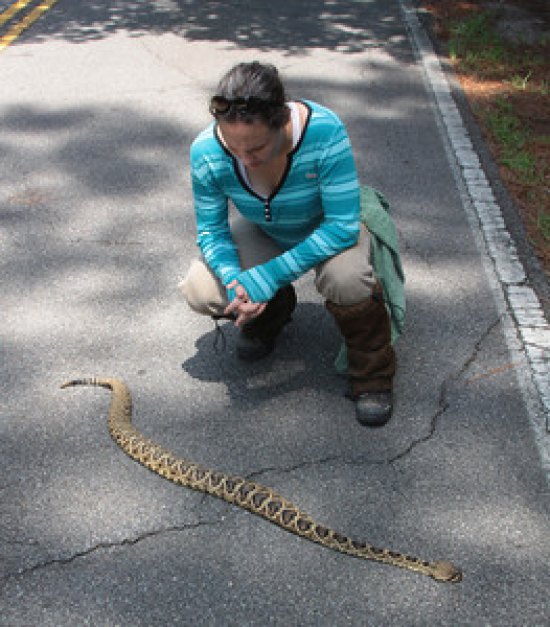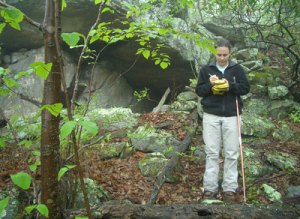Biology Professor Receives Grant to Study Rattlesnakes

close-up
look at
a rattlesnake
as it crosses a road. She has spent
much of
her career
tracking the eastern diamondback
rattlesnakes to
learn more about how and where they
live, and
how far they roam.
An assistant professor of biology at Marshall University, she has spent much of her career tracking the snakes to learn more about how and where they live, and how far they roam.
Waldron's newest research project will take her to the Marine Corps Recruit Depot Parris Island in Beaufort County, S.C., where she will be leading a study to examine the effects of common military land use practices on the snakes. The research is being funded through an $87,800 grant from the U.S. Department of the Army.
According to Waldron, the eastern diamondback is found in the southeastern part of the U.S., along the coasts of North Carolina down through Florida and along the Gulf Coast, including on several U.S. Department of Defense installations. Due to declining numbers and widespread loss of habit, the species is currently under review for possible protection under the Endangered Species Act.

Waldron said that ultimately the military's goal is to make sure their habitat management practices both ensure the success of their training operations and address the conservation of at-risk species. She said Parris Island provides an ideal setting for the study, given a history of eastern diamondback rattlesnake research at the facility and recent changes to the habitat.
"Recently, they've implemented new land management activities at Parris Island, including prescribed forest thinning and fire, to improve their training operation," she said. "These activities have significantly modified the habitat structure, and potentially changed the amount of suitable diamondback habitat." She added that Parris Island also is located in a coastal area that has faced rapid development pressure from an expanding human population, including in popular vacation and retirement destinations like Hilton Head Island. "Increased human-wildlife conflicts are expected as species redistribute in response to shifting climatic changes and habitat loss," she said.
"These effects are particularly important for DOD training installations along the southeastern coast, where projected changes in sea-level will interact with current coastal erosion and severe storms to accelerate the rate and magnitude of coastal habitat loss," she said.
For the study, she and her team, including Dr. Shane Welch, research assistant professor, and graduate student Brad O'Hanlon, will conduct mark-recapture surveys and use radio telemetry to monitor free-ranging diamondbacks over a period of two years. They also will be monitoring the vegetation associated with the new land use treatments.
Waldron said the results will be applicable to the region's other military installations that may employ similar land use practices, including Marine Corps Base Camp Lejeune in Jacksonville, N.C., Eglin Air Force Base in northwest Florida and Camp Shelby Joint Forces Training Center near Hattiesburg, Miss.
She said, "At the end of the study, we will be providing the Department of Defense with an objective, preliminary assessment of the snakes' response to the new land management practices in the training areas, as well as regionally applicable home range maps and habit use models for use by natural resource managers.
"These natural resources managers play a critical role in maintaining long-term access to training facilities, particularly when imperiled species like the diamondback occur within training areas. Studies like ours can provide them with a degree of confidence needed to employ adaptive policies for species conservation. It's fulfilling to think that our results will be used to decrease the likelihood that diamondback imperilment will conflict with military training activities."










No comments:
Post a Comment